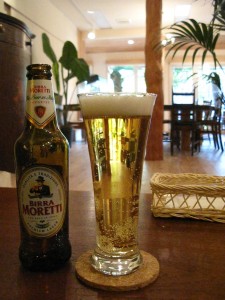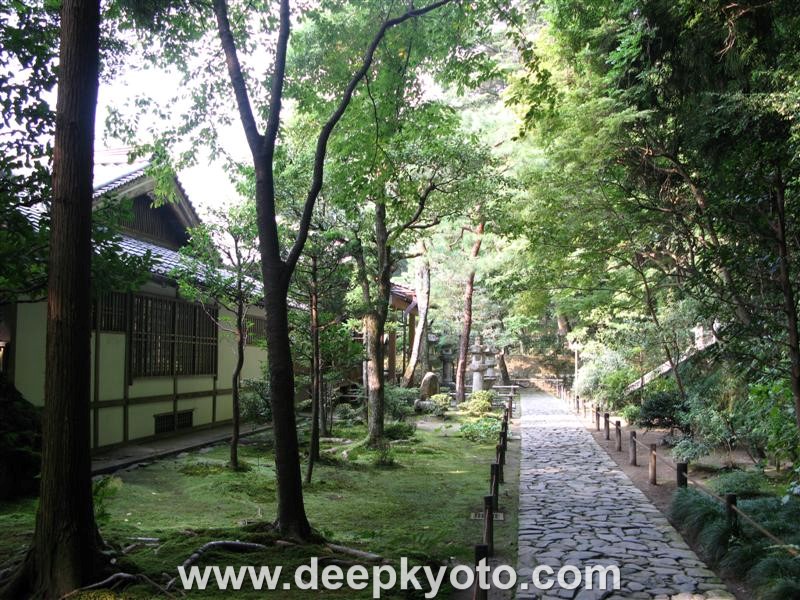 On Wednesday I spent a very pleasant evening at Robert Yellin’s ceramics gallery, looking at all beautiful things that he has gathered there and enjoying his fascinating conversation. Robert had invited me up to see his new exhibition; the beautiful blue celadon of Kubota Rekkou. Light, pale and graceful this é’ç™½ç£ (seihakuji – or blue-white porcelain) stands in marked contrast to the heavier, and more rustic wood-fired wares already on display. Robert drew my attention first to the latter kind of pottery, the high-fired, unglazed “yakishime.” In the corner were two large jars, one from Bizen and the other from Shigaraki. Explaining how such works are made, he told me,
On Wednesday I spent a very pleasant evening at Robert Yellin’s ceramics gallery, looking at all beautiful things that he has gathered there and enjoying his fascinating conversation. Robert had invited me up to see his new exhibition; the beautiful blue celadon of Kubota Rekkou. Light, pale and graceful this é’ç™½ç£ (seihakuji – or blue-white porcelain) stands in marked contrast to the heavier, and more rustic wood-fired wares already on display. Robert drew my attention first to the latter kind of pottery, the high-fired, unglazed “yakishime.” In the corner were two large jars, one from Bizen and the other from Shigaraki. Explaining how such works are made, he told me,
 “The artist, makes the piece, the form, but has no idea how it’s going to turn out in the kiln… And the process is pretty intense you know. We just look at the finished product, but you have to think of the digging of the clay, the processing of the clay, the wedging of the clay, the drying… It’s a very long process to make a piece. And then they put it in this wood-fired entity of a kiln and they let go. Which to me is amazing because we live in this world where everybody wants control of processes, of their own lives, but it’s actually the letting go where a lot of the beautiful drama occurs. And that’s what goes on with these works. The potter put them in and had no idea how it would turn out, in coloration… It’s very different from Western aesthetics because it’s not perfect. You got these drips, you got cracks, you got fissures, you got pitted works, a lot of it’s uneven, but there’s a large portion of Japanese spirit in these wood-fired pieces. It’s the imperfection that makes them beautiful. And they are also very seasonal as well. These pieces are more meant for the autumn. They are heavy. They are really beautiful, large, energizing pieces. They are not really summer pieces…
“The artist, makes the piece, the form, but has no idea how it’s going to turn out in the kiln… And the process is pretty intense you know. We just look at the finished product, but you have to think of the digging of the clay, the processing of the clay, the wedging of the clay, the drying… It’s a very long process to make a piece. And then they put it in this wood-fired entity of a kiln and they let go. Which to me is amazing because we live in this world where everybody wants control of processes, of their own lives, but it’s actually the letting go where a lot of the beautiful drama occurs. And that’s what goes on with these works. The potter put them in and had no idea how it would turn out, in coloration… It’s very different from Western aesthetics because it’s not perfect. You got these drips, you got cracks, you got fissures, you got pitted works, a lot of it’s uneven, but there’s a large portion of Japanese spirit in these wood-fired pieces. It’s the imperfection that makes them beautiful. And they are also very seasonal as well. These pieces are more meant for the autumn. They are heavy. They are really beautiful, large, energizing pieces. They are not really summer pieces…
 Which is why I wanted to introduce a summer type of style. In the summer, you want something that imparts not so much energy, but a coolness. Something that you just look at and you’re cooled. And that’s why we are having this exhibition of the bluish-white porcelain called seihakuji. You just walk into this room and you feel very light and airy. The touch when you do touch a piece becomes chilled… And with the energy issues that are going to be happening this summer, how are we going to cool ourselves? The Japanese have done it in an energy-saving way for a long time. Whether it be furin (a wind-chime) , whether it be some mugicha (barley tea), or kakigÅri (shaved ice). And obviously people have changed their surroundings in the past to match the seasons. This house has these screens to let the air flow through. These are summer fusuma. The Japanese were pretty brilliant about matching their lifestyles to the seasons. When it was winter this whole house was divided into individual rooms and you heated one with a hibachi or something. But in the summer, it was furin, it was kakigÅri, it was bamboo and sudare (light bamboo screens)… and it was using vessels like this, because your senses are affected by colors, by touch, and how you make this part of your daily life. Just look at that color! It cools you on many visceral levels.” [Read more…]
Which is why I wanted to introduce a summer type of style. In the summer, you want something that imparts not so much energy, but a coolness. Something that you just look at and you’re cooled. And that’s why we are having this exhibition of the bluish-white porcelain called seihakuji. You just walk into this room and you feel very light and airy. The touch when you do touch a piece becomes chilled… And with the energy issues that are going to be happening this summer, how are we going to cool ourselves? The Japanese have done it in an energy-saving way for a long time. Whether it be furin (a wind-chime) , whether it be some mugicha (barley tea), or kakigÅri (shaved ice). And obviously people have changed their surroundings in the past to match the seasons. This house has these screens to let the air flow through. These are summer fusuma. The Japanese were pretty brilliant about matching their lifestyles to the seasons. When it was winter this whole house was divided into individual rooms and you heated one with a hibachi or something. But in the summer, it was furin, it was kakigÅri, it was bamboo and sudare (light bamboo screens)… and it was using vessels like this, because your senses are affected by colors, by touch, and how you make this part of your daily life. Just look at that color! It cools you on many visceral levels.” [Read more…]








 A few weeks ago
A few weeks ago  Sheep’s Public Cafe is a place I have been meaning to check out for a while. I kept seeing it as I cycled home from work and thinking to myself “Sheeps. Why Sheep’s?” The signboard outside says “Fish & Chips”, “Guinness” and looking at the exterior I imagined just another foreign style pub. Once inside though I was impressed by how bright and cheerful it is. The owners have abandoned traditional British or Irish pub trappings in favour of their own relaxed cafe style. And though they do serve Guinness and chips, and Bass Pale Ale, they also have a large selection of very nice Belgian beers including some on tap. And why is it called Sheep’s? Well, the two handsome young fellas who run it, Sawano Takehiko and Yokoyama Naoki, were both born in the Year of the Sheep. Simple really.
Sheep’s Public Cafe is a place I have been meaning to check out for a while. I kept seeing it as I cycled home from work and thinking to myself “Sheeps. Why Sheep’s?” The signboard outside says “Fish & Chips”, “Guinness” and looking at the exterior I imagined just another foreign style pub. Once inside though I was impressed by how bright and cheerful it is. The owners have abandoned traditional British or Irish pub trappings in favour of their own relaxed cafe style. And though they do serve Guinness and chips, and Bass Pale Ale, they also have a large selection of very nice Belgian beers including some on tap. And why is it called Sheep’s? Well, the two handsome young fellas who run it, Sawano Takehiko and Yokoyama Naoki, were both born in the Year of the Sheep. Simple really.






